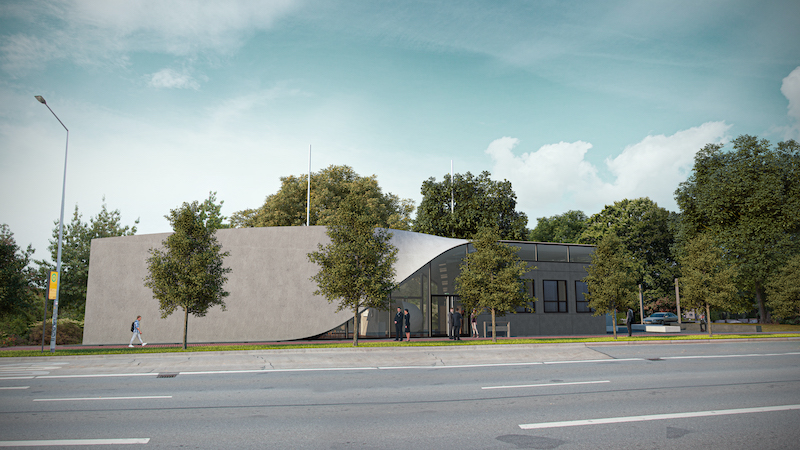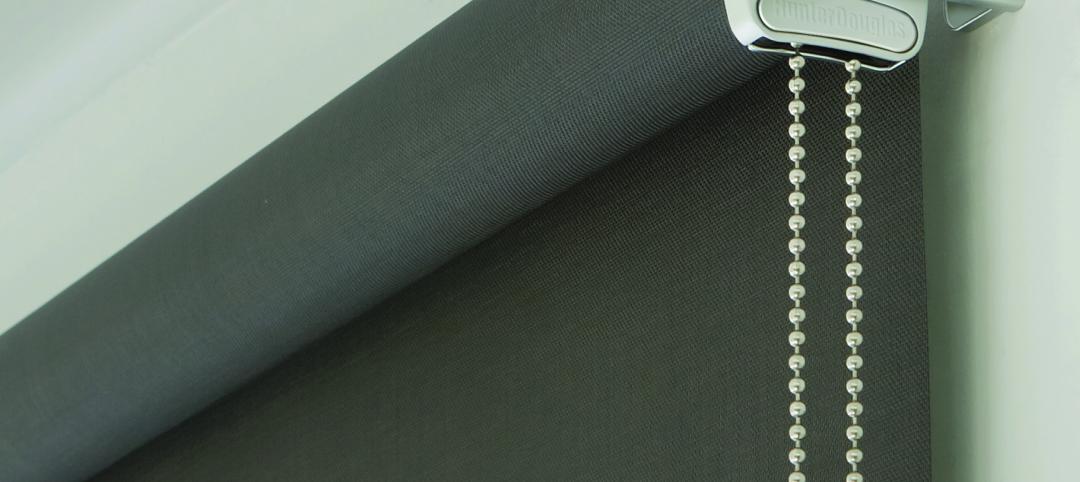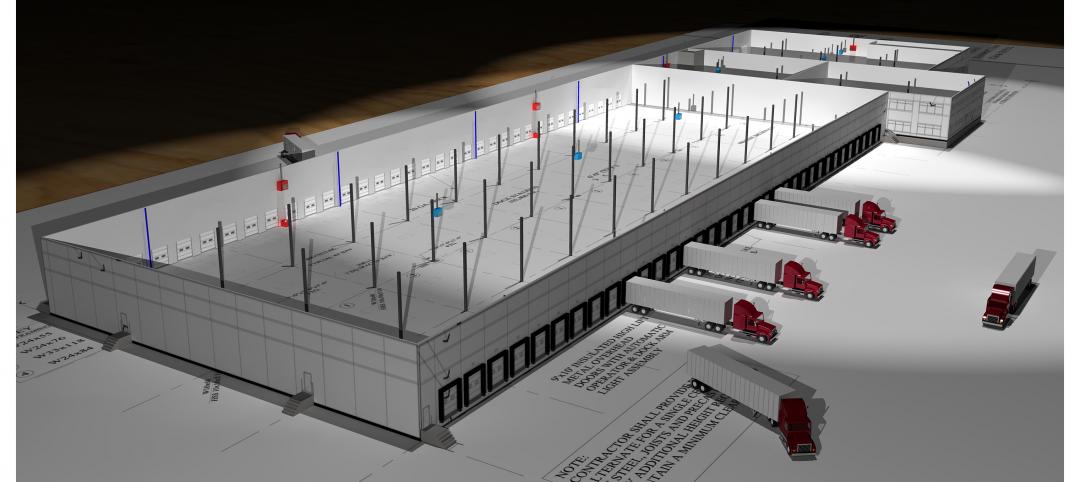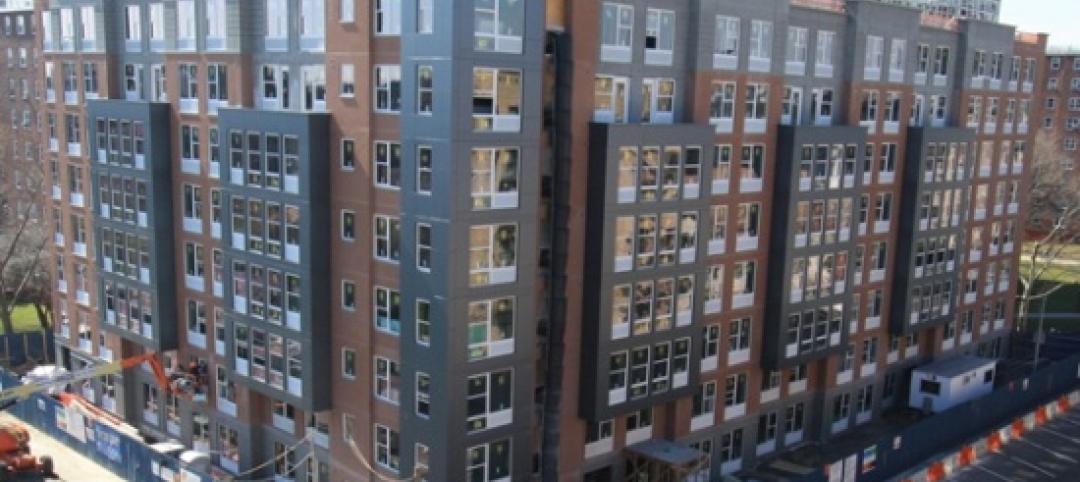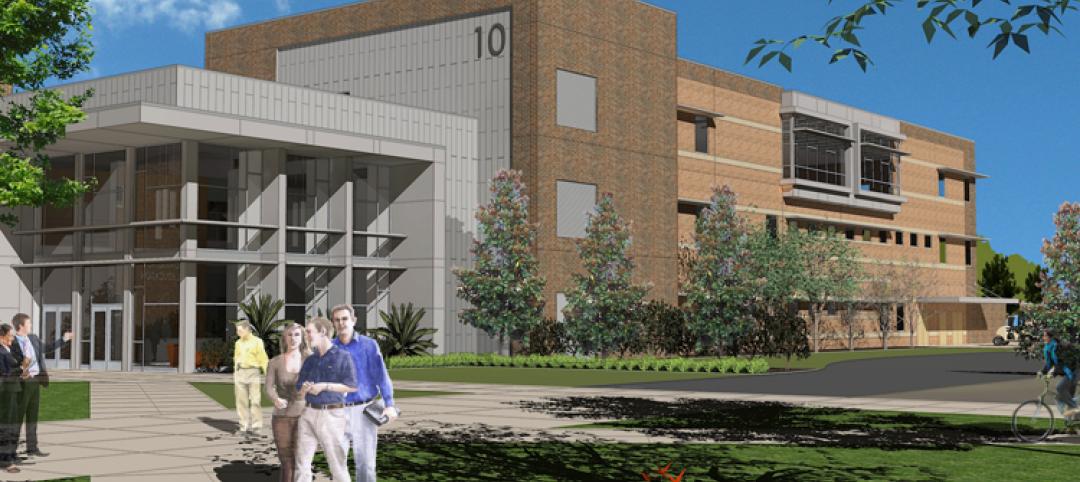Two months ago, the foundation was poured for CUBE, a 2,200-sf, two-story building on the premises of Technical University Dresden in Germany, that claims to be the world’s first building made entirely of carbon-fiber reinforced concrete.
This 5 million Euro (US$5.63 million) project, which was delayed because of the coronavirus outbreak, is now scheduled for completion next spring. It consists of two parts: a precast “box”; and the “twist,” a double-curved roof that the lighter-weight and bendable composite facilitates. This university building—with classroom, lab, and presentation spaces, and a small kitchen—will be distinguished by its 24-meter length of seamless concrete.
The German Federal Ministry of Education and Research provided the financing for this demonstration project, which is also known locally as Carbonhaus. (CUBE is shorthand for C3—Carbon Concrete Composite.) The design architect is Gunter Henn, chairman of Munich-based architecture firm HENN. Architeckten Ingenieure Batzen (AIB) is the engineer, Assmann Advice + Plan is providing structural planning services, Bendl HTS is the CE, and Betonwerk Oschatz is building the Box. The Institute of Concrete Construction at the University of Applied Sciences, Economics, and Culture in Leipzig; and the Institute of Concrete Structures at Technical University Dresden are also involved in this project, the latter on the procurement side.

Carbonhaus will include spaces for classrooms, events, and labs.
WHAT IS CARBON-FIBER REINFORCED CONCRETE?
Carbon-fiber reinforced concrete is a composite product that consists of carbon fiber—which provides strength and stiffness—and polymers—which hold the fibers together in a kind of matrix. The micro- or macrofibers can be either synthetic or natural. The consensus within the industry is that this kind of reinforcement can significantly increase the life of the structure in which the composite is used.
The carbon fiber being deployed for CUBE is produced from petroleum-based polyacrylonitrile, or PAN. It can also be made from lignin, an organic polymer derived from waste material in paper production. TU Munich has been exploring the production of carbon fiber from algae oil.
Manfred Curbach, director of the Institute of Concrete Construction at TU Dresden, where he is a professor, has been advocating for the greater use of lighter-weight and thinner reinforcement materials for more than two decades, starting with textiles and glass, and—since 2003—carbon-fiber. So far, however, the construction industry has been slow to embrace these materials for concrete components, especially in new construction of infrastructure and buildings. Curbach blames regulations that make the introduction of these materials more difficult to achieve.
And then there’s industry inertia. “The industry has been using the same reinforcement methods for the last 40 years,” says Barzin Mobasher, a professor at the School of Sustainable Engineering and the Built Environment at Arizona State University, who has been researching and working with different structural reinforcement alternatives since 1991.
SEE ALSO: Lessons From a Builder's Offsite Construction Journey, featured on BD+C's new Accelerate AEC innovations site (short registration required).
So, for example, at least half of the concrete in a typical building component is used to protect the steel reinforcement from corrosion. Mobasher adds that as much as 60% of a concrete structure is dead weight that isn’t factored into the design.
Mobasher elaborates that because steel and concrete “work in tandem, but not together,” the resulting component continues to be prone to cracking and erosion, to the point where buildings and infrastructure don’t last anywhere near as long as they should. “They are designed for strength, but not durability, and no one is accountable after 10 years of service.”
On the other hand, the weight of carbon reinforcement materials is about one-quarter that of steel, with the same tensile strength. The composite component is more durable and, Curbach explains, saves up to 70% in greenhouse gas emissions. And cost isn’t an obstacle when one factors in labor, equipment, manufacturing, and transportation. (Carbon reinforced concrete costs $13-15 per kilogram to produce, about the same as steel.)
Curbach points to Carbonhaus’ twisted roof as evidence of how the material can be bended and molded into all kinds of shapes, giving designers and engineers greater flexibility.
INFRASTRUCTURE REPAIR HOLDS OUT SOME PROMISE FOR CARBON-FIBER REINFORCED CONCRETE
To advance the use of carbon-fiber reinforced concrete, Curbach launched Curbach Bösche Ingenieurpartner Dresden, a consulting firm, in 2005. Nine years later, he started CarbonCon, an entity that disseminates information about the materials.
While he hasn’t had direct contacts with AEC firms in North America yet, Curbach says companies in China and Israel have shown some interest. Curbach remains convinced that carbon reinforced concrete is going to be more widely used, but it could take 20 years, and would require regulations “that would help accelerate the decline of CO2.”
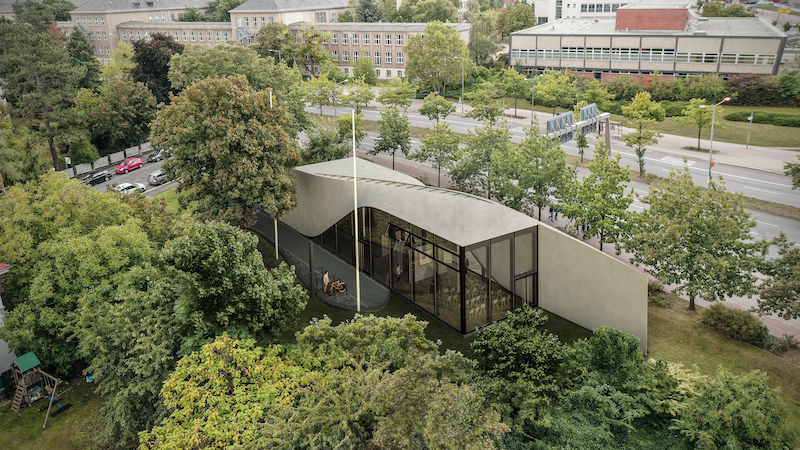
A curved roof and one wall that is 24 meters of seamless concrete are two characteristics of Carbonhaus.
Mobasher notes that light-gauge steel, which wasn’t used that much for construction 25 years ago, is now ubiquitous for commercial framing. He sees no reason why carbon reinforcing materials couldn’t have the same trajectory, although he acknowledges that using these materials for transportation infrastructure in the U.S. is still cost prohibitive.
He has seen some domestic interest in using carbon-fiber reinforcing materials for quicker repair work, where a layer of the composite would be integrated into the damaged infrastructure.
Indeed, Augsburg University in Germany has developed reinforcement materials with short carbon fibers that have proven effective for mitigating stress fractures and cracks in concrete. However, a complete replacement of reinforcing steel in structural elements requires relatively large reinforcement cross-sections of continuous carbon fibers oriented in the direction of the stress. This can’t be accomplished with short fibers that are finely distributed.
Related Stories
| Mar 30, 2012
New windows and doors revitalize older buildings
With their improved aesthetics, energy efficiency, and durability, replacement windows and doors can add significant value to a renovation project.
| Mar 29, 2012
Roller shade operating system wins IF Product Design Award
Design experts in the iF jury recognized the engineering invested in the RB 500 Roller Shade, including a metal clutch with a patented construction, a durable zamac housing with polished finish, and a chain drive unit that excels in maximum operating comfort.
| Mar 29, 2012
Construction completed on Las Vegas’ newest performing arts center
The Smith Center will be the first major multi-purpose performance center in the U.S. to earn Silver LEED certification.
| Mar 28, 2012
Meridian Design Build Begins work on 38 acre redevelopment project
The project includes construction of a new 150,585-sf cross dock facility that will include full service truck maintenance and repair bays, a truck wash, and approximately 20,000-sf of corporate office space.
| Mar 28, 2012
Ideas and input drive stories in online community, noraXchange
Community designed to help building and design professionals address challenges they face in their jobs.
| Mar 27, 2012
Skanska hires aviation construction expert Bob Postma
Postma will manage Skanska’s nationwide in-house team of airport construction experts who lead the industry in building and renovating airport facilities and their essential features.
| Mar 27, 2012
Precast concrete used for affordable, sustainable housing in New York
Largest affordable housing development in the nation will provide housing for close to 500,000 people.
| Mar 27, 2012
Groundbreaking held for Valencia College West Campus Building 10 in Orlando
Project led by design-build team of SchenkelShultz Architecture and McCree General Contractors, both of Orlando.
| Mar 26, 2012
Jones Lang LaSalle completes construction of $536M Parkview Regional Medical Center
Hospital ushers in new era of local access to advanced medical treatments in Northeast Indiana.
| Mar 26, 2012
McCarthy tops off Math and Science Building at San Diego Mesa College
Designed by Architects | Delawie Wilkes Rodrigues Barker, the new San Diego Mesa College Math and Science Building will provide new educational space for students pursuing degree and certificate programs in biology, chemistry, physical sciences and mathematics.


